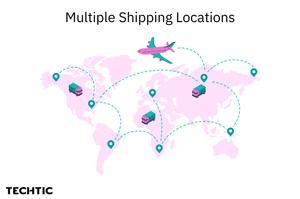Efficient Order Management: A Complete Guide to Split and Back Orders in B2B eCommerce
Sector: Digital Commerce
Author: Nisarg Mehta
Date Published: 08/08/2024

Contents
According to Forrester, 75% of B2B companies report that managing complex orders efficiently is critical to their operations. Unlike B2C, B2B eCommerce businesses encounter multiple challenges in order fulfillment. This can be due to a variety of factors such as large order volume, products that are only partially available or keeping them in multiple warehouses can be some of the factors. B2B manufacturers frequently use split orders and split shipments to divide large orders while creating and managing backorders in such scenarios.

In this blog we will try to understand the basic process of creating such orders and how it can help businesses to keep customers satisfied.
Understanding Split Order, Back Order and Split Shipping
Split Order
When a single customer order is divided into multiple shipments due to varying availability of items or different warehouse locations it is called a Split Order.
Back Order
A backorder is created when an item is out of stock at the time of ordering but will be fulfilled once the item is restocked.
Split Shipping
Split shipping is created while sending parts of an order in separate shipments, they can be shipped at different times or from different locations.
Split Order Process explained

Here’s a clear explanation of the split order process:
- Order Placement: A customer places the order via the B2B eCommerce store.
- Inventory Check: Once the order is received the system checks the availability of items and their current quantities and locations.
- Split Order: If the items are not available in enough quantities or are stored at different warehouses a split order is created.
Following are some of the considerations that comes into play while we decide to split the order





- Split Shipping: Available items are shipped to the customer and split shipping is created for large order or items stocked across multiple warehouses.
- Backorder creation: For the remaining items that are out of stock or will take time to get restocked a back order is created.
- Final Shipment: Once the backordered items are back in stock, they are shipped to the customer as and order is fulfilled.
Majority of the eCommerce platforms like BigCommerce and Shopify Plus support split order and split shipment functionality and integration with inventory management software, OMS tools like Brightpearl or OrderDesk, and shipping solutions such as ShipStation or ShipBob. These integrations enable the efficient handling of split orders, back orders, and split shipping.
Conclusion
Effectively managing split orders is essential for B2B businesses to achieve high customer satisfaction, operational efficiency, and improved inventory management. Companies utilizing split order strategies see a 15-25% increase in inventory turnover rates, enabling them to better meet customer demands, optimize logistics, and remain competitive in a fast-paced market. This capability also empowers sales teams to confidently accept and fulfill bulk orders in advance.
For more insights and assistance with implementing split order functionality in your B2B eCommerce operations, our team of experts is here to help. Contact us today to enhance your order management capabilities and drive business growth.



